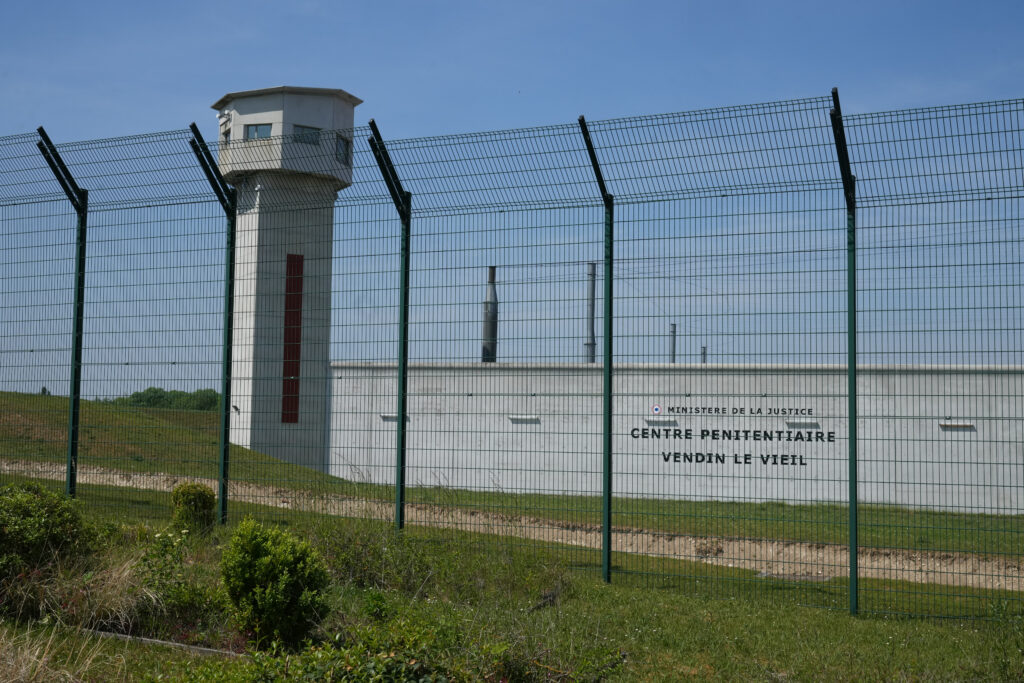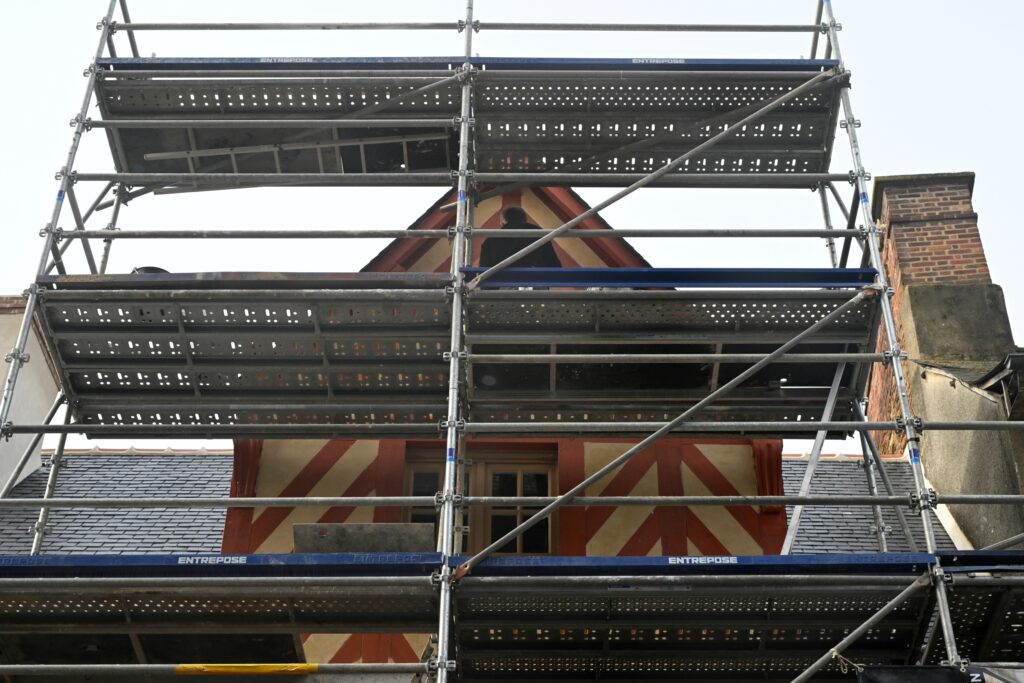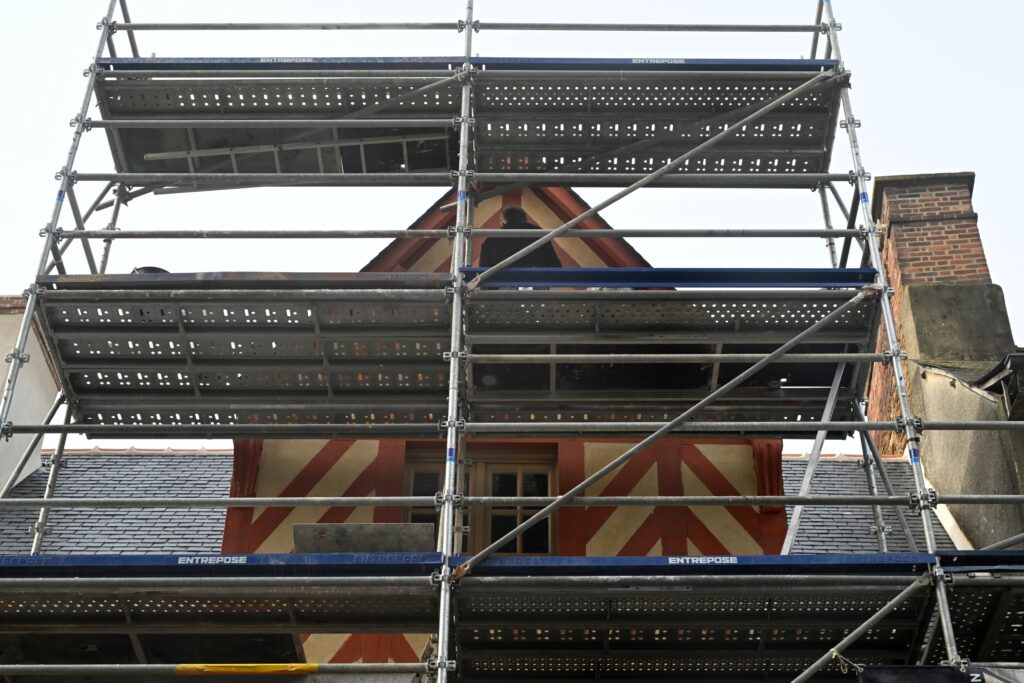Les premiers narcotrafiquants transférés vers la prison de Vendin-le-Vieil
Les 17 premiers détenus parmi les 100 narcotrafiquants particulièrement dangereux que doit accueillir le quartier haute sécurité de la prison de Vendin-le-Vieil (Pas-de-Calais) sont arrivés mardi, a annoncé le ministre de la Justice, Gérald Darmanin.Sept fourgons blancs de l’administration pénitentiaire sont arrivés en fin de matinée, escortés par des motards de la gendarmerie nationale jusqu’à l’entrée de la prison située près de Lens, a constaté l’AFP.Ce centre pénitentiaire est le premier à avoir été choisi pour accueillir les narcotrafiquants “les plus dangereux” du pays. Un deuxième quartier de haute sécurité doit entrer en fonctions à la mi-octobre à la prison de Condé-sur-Sarthe (Orne). Au total, 200 détenus sont appelés à être incarcérés dans ces deux nouveaux quartiers de lutte contre la criminalité organisée.Selon David Lacroix, secrétaire local de FO Justice, les personnes déjà transférées viennent “de la région parisienne et du sud de l’Oise”. D’autres transferts sont prévus depuis “la région marseillaise, la région grenobloise” et les Antilles, a-t-il précisé. Les transfèrements, qui ont mobilisé GIGN et Raid, se sont bien déroulés selon plusieurs responsables syndicaux. Brouilleurs de drone, de téléphone, fouilles obligatoires après chaque contact avec l’extérieur, promenades limitées à cinq et déplacements individuels: “leur quotidien va changer”, a détaillé M. Lacroix.Selon Thomas Vaugrand, secrétaire général de l’Ufap-Unsa Justice Hauts-de-France, “ce sont tous des détenus avec des moyens financiers extérieurs assez importants, des moyens de continuer (…) leur trafic ou alors de commanditer des meurtres depuis leur cellule”. L’objectif du dispositif est d'”isoler ces profils, rendre étanche l’établissement avec l’extérieur.””On avait déjà affaire à de très gros profils. On est parti un cran au-dessus au niveau de la sécurité, mais on sait gérer ce type de profils”, a affirmé un autre syndicaliste.- Amra aussi – À Vendin sont déjà incarcérés Salah Abdeslam, condamné à la perpétuité incompressible pour les attentats du 13 novembre 2015 à Paris et Saint-Denis, et le braqueur multirécidiviste Rédoine Faïd qui s’est évadé déjà deux fois de prison.Le narcotrafiquant Mohamed Amra, dont l’évasion sanglante en mai 2024 a coûté la vie à deux agents pénitentiaires et qui est actuellement incarcéré à Condé-sur-Sarthe, “a vocation à aller dans cette prison”, a déclaré sur TF1 le garde des Sceaux mardi soir, refusant d’en dire plus sur la date de son transfert.Plusieurs avocats ont déploré la difficulté à contester ces transfèrements et le choix des détenus soumis à ce régime carcéral renforcé.Un détenu convoqué pour un débat contradictoire il y a quelques jours en vue d’un éventuel placement dans l’un de ces quartiers a ainsi été “condamné pour un braquage, pas pour du trafic de stupéfiants”, s’est insurgée son avocate Sophie Rey-Gascon auprès de l’AFP.Elle dénonce un “détournement” d’une procédure conçue pour empêcher des narcotrafiquants de continuer leurs activités depuis leur prison.Le Syndicat de la magistrature (SM, classé à gauche) a lui aussi dénoncé “fermement la procédure de sélection des détenus transférables qui ne permet qu’un exercice factice des droits de la défense”.Sur TF1, M. Darmanin a indiqué que “70% des détenus” qui iraient dans cette prison étaient en détention provisoire et expliqué que le choix des personnes était effectué par les magistrats instructeurs, le renseignement pénitentiaire et l’administration pénitentiaire.Ces premiers transfèrements “signent le retour officiel des quartiers +haute sécurité+, supprimés il y a plus de quarante ans pour leur inefficacité et leur nocivité”, estime le SM.La prison de Vendin-le-Vieil, qui était déjà avec celle de Condé-sur-Sarthe l’une des deux prisons les plus sécurisées de France, a subi des travaux pour renforcer encore sa sécurité.La cour de promenade a été bétonnée pour empêcher la dissimulation d’objets. Un portique à ondes millimétriques a été installé, des caillebotis ajoutés aux barreaux habituels des cellules et des trappes installées sur l’ensemble des portes pour pouvoir menotter les détenus avant qu’ils n’en sortent. Les parloirs ont été dotés d’hygiaphones, avec une vitre empêchant le contact physique entre détenus et visiteurs.edy-mdh-bbr-cnp-zl/cal/swi





